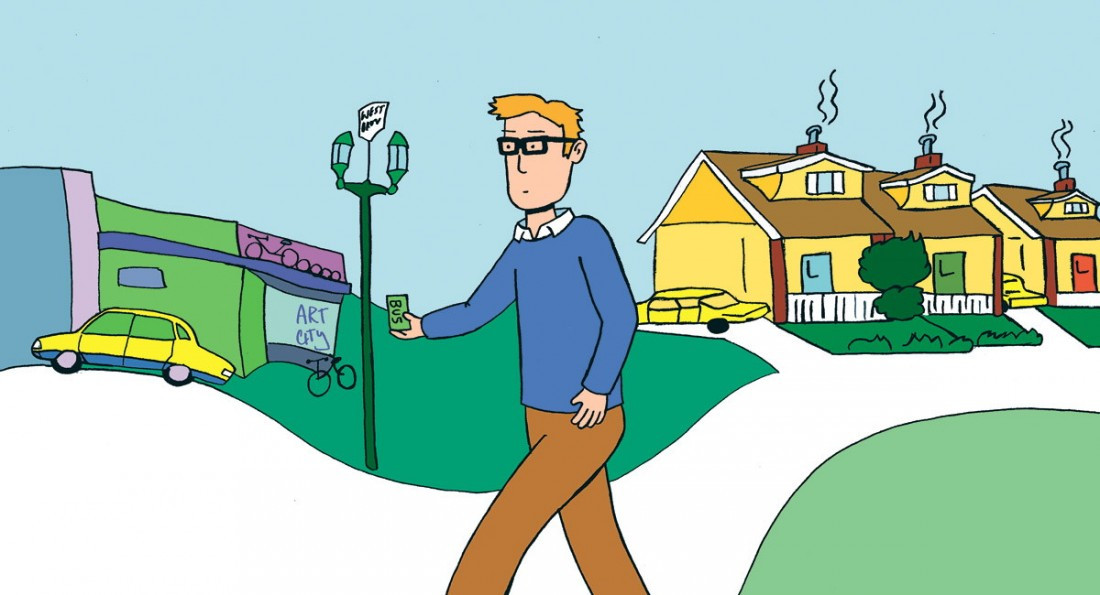Breaking down barricades
A former suburbanite looks forward
Despite formerly running an urban-centric blog for six years, save a brief stint in West Broadway, the suburb has been my home for my entire life.
There is almost nothing I miss about living in a suburb. Many things don’t become apparent until you surrender the bubble world of your car...some of those things happen to be contentious items for the suburban mob. Like driving.
It is no secret that Winnipeg’s mood on any given day is directly related to one of two things: the weather, and/or the condition of the roads. Happily I confess, I don’t miss my car. The malls have the same stores anyway, and the time to drive to Grandma’s is the same time it takes by bus.
I replaced driving with a ten-minute walking commute. The psychological differences between driving through an environment and physically interacting with it on the ground cannot be understated. I now walk downtown with the familiarity everyone else has with their own cul-de-sacs. The normalization of this type of interaction with the city on a daily basis gives you a different appreciation of not only its buildings and its people, but also what it sorely lacks: people living there.
What it isn’t missing is a grocery store. One comes to realize that it isn’t that there is no place to buy groceries but rather, if there is no grocery store familiar to the suburban palette, then no grocery store exists. Spare the chicken-and-egg scenarios. You aren’t going to live or shop there anyway, Sobeys or not.
And herein lies the toxic heart of how urban Winnipeg is approached: for serving the suburban population. And for the suburban population there must be suburban entities. Maybe we knew that already, but in exiling myself from suburban life, it took on a new level of understanding. It sunk in.
Why this new level of intuition, when I had come here everyday beforehand? The conclusion, I think, is psychological. It became my neighbourhood, and when it did, I became naturally more defensive about it.
No urbanist is likely to be able to convince someone who has a poor image of downtown, who hates paying for parking, hurries nervously to their car after a Jets game, who thinks barriers at Portage and Main should stay because pedestrians crossing when traffic is stopped at a red light is somehow dangerous, who worries about getting stabbed or mugged, that downtown is a pretty good place and is becoming greater. Just like no proud resident of the North End is going to be able to instil that pride on an outsider.
Some people aren’t up for an urban lifestyle, and that is their choice. Downtown is for urban people: create it for urban people. With the same zest we love to create box retail outlets with vast seas of parking spaces with only suburbanites in mind.
There is no reason to continue debating what downtown needs or doesn’t with people who have no interest in what an urban lifestyle entails. For an urban renaissance to happen in Winnipeg, people need to live there, and it needs to be developed for urban people, who want an urban lifestyle.
The other way around is as backwards as barricading pedestrians from crossing what would otherwise pass as an average sized intersection in other cities.
Part of the series: The Urban Issue 2014
Published in Volume 68, Number 25 of The Uniter (March 27, 2014)







